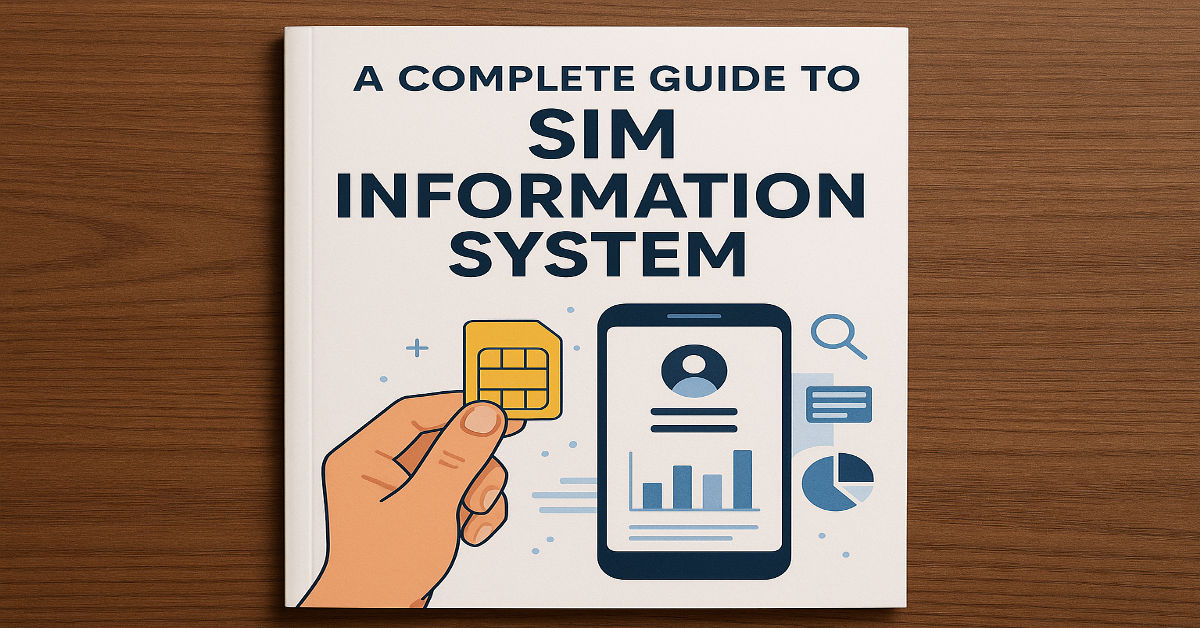
lntroduction
Business intelligence exercises transform how professionals develop analytical expertise in the technology industry. These practical activities help analyze data, business professionals and technological enthusiasts to control basic BI skills through real-world scenarios and interactive educational experiences.
Whether you are working with Power BI, Tableau, or SQL databases, structured business intelligence exercises provide the basis for decision-making based on data that increases business growth. This manual examines ten basic approaches to building your BI practical application.
1. Understanding Exercise Business Intelligence within the Technical World
Business intelligence exercises function as a bridge between theoretical information and realistic utility in records evaluation. These structured sports simulate actual-world situations, where specialists have to extract knowledge from complicated fact units, create significant visualizations, and submit action hints to the events.
Why are BI exercises in today’s ecosystem based on data?
Modern technology companies are strongly relying on data analysis to control strategic decisions. Exercise BI: Prepare experts on the processing of various data sources, from metrics of customer behavior to operating performance indicators. This practical training ensures that teams can respond quickly to market changes and optimize business processes.
Connection between business knowledge and practical BI tasks
Effective BI exercises combine manipulation with raw data with strategic business intelligence exercises results. Participants learn to identify key performance indicators, monitor customer paths, and measure campaign efficiency through practical practice with real data sets.
From Bi to action theory: the gap in learning
Traditional data analysis courses often focus on technical skills without practical context. Business intelligence exercises fulfill this gap by providing structured scenarios that reflect real challenges in the workplace and help students apply statistical concepts to solve business problems.
As business news exercises form decisions
Regular practice with BI tools develops the skills of critical thinking necessary for data interpretation. Experts discover ways to query the quality of data, become aware of traits, and efficiently communicate the findings to non-technical stakeholders.
2. Key attributes of effective BI exercise
Successful business intelligence exercises shares several important characteristics that maximize learning results and skills development.
Practical vs. theoretical approaches to bi practice
Interactive exercises using actual BI platforms provide greater value than theoretical discussions. Students acquire muscle memory with tool interfaces and, at the same time, develop strategies for solving problems through direct data challenges.
Project learning and dashboard creation
Complete projects that result in functional dashboards or reports offer a comprehensive learning experience. These exercises teach data preparation, visualization design, and communication among participating parties in integrated workflows.
How complexity and skills level shape BI training
Effective exercises correspond to the difficulty level for the student’s experience. Beginners start with pretend data sets and simple visualizations, while advanced users solve chaotic data and complex analytical models.
Types of outputs – messages, control panels, KPI
Different exercise formats focus on specific skills. Static messages teach data summary, interactive dashboards develop user experience design, and KPI monitoring focuses on the selection and monitoring of metrics.
3. BI tools that each analysis should use for practice
Mastering multiple BI platforms ensures flexibility in various professional environments and project requirements.
Explained Power BI Business Intelligence Exercises
Microsoft Power BI usually includes a connection to files or Excel databases, creating data models with relationships and creating interactive visualizations. Practical scenarios include monitoring the performance of sales and analyzing customer segmentation.
Tableau for an interactive visualization exercise for data visualization
Tableau exercises emphasize the Drag-and-Drop features to create complex visualizations. Common practice projects include geographical mapping, time series analysis, and multidimensional data exploration through interactive filters.
SQL & Python for data wrangling & modeling
Exercise SQL focuses on the extraction and transformation of data by means of joins, aggregations, and window functions. Python exercises usually include Pandas to handle data and matplotlib or SEABORN for statistical visualization.
Examination of other BI platforms: Qlik, Looker, Google Data Studio
Each platform offers unique strengths. Qlik exercises associate data modeling, Looker focuses on SQL-based transformations, and Google Data Studio provides an accessible news web practice.
4. Structured teaching paths: from beginners to experts
The progressive development of skills through carefully sequenced business intelligence exercises ensures comprehensive knowledge building.
Business News For Beginners
Exercise at the basic level uses clean, small data sets to teach basic concepts such as data import, simple graphs, and filter applications. It is usually an analysis of data on the sale or visualization of the survey results.
Medium challenges with actual data
Medium-level exercises introduce data quality problems, multiple data sources, and advanced graphs. Participants learn to process missing values, create calculated fields, and propose multi-page messages.
Advanced projects with predictive analytics
Exercise at the level of experts includes statistical modeling, prognoses, and integration of machine learning. These projects may include Curn Curnet prediction or inventory optimization scenarios.
Personalization of your teaching trip BI
Effective learning paths adapt to individual career goals and industry focus. Marketing experts can emphasize campaign analysis, while the operations teams focus on process optimization.
5. Data Preparation: Initial Point of Exercise BI

Quality analysis begins with the correct data preparation, which makes it a major area of focus for practical exercises.
Understanding data pipes and ETL tools
ETL sports educate data from diverse assets, transforms it through cleansing and aggregation, and loads it into analytical databases. These processes form the basis of reliable BI systems.
Cleaning data and quarrels of basic substances
Practical exercises address not unusual records’ best trouble,s inclusive of reproduction information, inconsistent formatting, and lacking values. Students learn to use tools such as Power inquiry or Python Pandas for data preparation tasks.
Using Excel and SQL in data preparation tasks
Excel exercises focus on pivot tables, functions of Vlookup, and data verification techniques. SQL exercises emphasize connections, gates, and data type transfers for analytical readiness.
Joining the API and external resources
Advanced exercises include web API connections, cloud databases, and data streaming sources. These skills are essential for modern BI implementations that require data integration in real time.
6. Visual exploration and design of the dashboard
Effective visualization is central to the successful implementation of business intelligence exercises news and communication between the parties.
Basics of Data Visualization in BI
Basic exercises teach the principles of graph selection, application theory application and design of layout for maximum impact. Students learn when to use column graphs versus line charts for different types of data.
Creating KPI control panels using Power BI or Tableau
The dashboard exercise focuses on the selection of metrics, the visual hierarchy, and the design of the user’s interaction. Participants learn to balance the density in different screen sizes.
Interactive Exercise BI Dashboard for Practice
Advanced visualization exercises include filters, drilling capabilities, and parameter controls. These functions allow users to explore data separately and answer specific business intelligence exercises questions.
Narration of data through visuals
Narrative exercise teaches how to lead users through analytical knowledge using visual progression and context annotations. This skill is essential for executive presentations and the purchase of participating parties.
7. Business intelligence exercises according to the case in the real world
Specific to industry scenarios helps students apply BI skills to relevant professional contexts and understand the requirements specific to the domain.
Sales and Marketing Analysis Projects
Common exercises include the cost of obtaining customers, measurement of campaign performance, and sales optimization. These projects usually include platforms to automate CRM marketing.
Financial and operational exercises BI
Financial exercises focus on the analysis of budget scattering, profitability monitoring, and cash flow forecasts. Operating scenarios may include the optimization of the supply chain and the quality management report.
Exercise for reporting healthcare and logistics
BI health care exercises often include patient results and resource analysis. Logistics exercises focus on delivery, stock management, and route optimization.
Cases to use the government and the public sector BI
Public sector exercises may include reports of budget transparency, metrics of services, and demographic analysis for the development of policy and resource allocation decisions.
8. Measuring the impact of exercise bi
Effective measurements ensure that practical activities are reflected in improved analytical abilities and business intelligence exercises results.
Tracking Metrics in BI Dashboards
Exercise of measurement teaches how to define success metrics, set up a baseline, and monitor improvement over time. Students learn to create control panels to monitor performance for their own skills development.
Translating knowledge into business results
Advanced exercises emphasize the connection between analytical findings and business intelligence exercises actions. Participants practice writing a summary and creating recommendations focused on data analysis events.
Linking BI Practice with analysis in real time
Modern exercises incorporate data streaming and automated reporting to simulate the current BI environment. This preparation is essential for roles including operational intelligence and monitoring systems.
Evaluating the progress of skills over time
Progressive evaluation exercises help students identify areas of strength and improvement. Regular skills evaluation ensures continued development and career progression.
9. Common mistakes in practicing BI and how to avoid them
Learning from typical errors accelerates the development of skills and prevents bad habits in a professional environment.
Excessive combination of data models
Beginning experts often create unnecessarily complex relationships and calculations. Effective exercise teaches the principles of simplicity and iterative development approaches to maintainable BI solutions.
Ignoring the needs of the parties and the KPI
Technically focused exercises sometimes neglect the business intelligence exercises context and requirements of users. Balanced practice includes simulating interviews with participating parties and activities of collecting requirements.
If properly cleans the data
The hurry to visualize without proper data preparation leads to unreliable knowledge. Structured exercises emphasize the evaluation and cleaning of data quality as basic BI skills.
Choosing an incorrect BI tool for a job
Exercise with the selection of tools teaches when to use various data-based platforms, user requirements, and technical restrictions. This knowledge prevents expensive implementation errors.
10. A rise in your skills using advanced BI projects
Continuous learning ensures that professionals BI remain up -to -date with developing technologies and methodologies.
Integration of machine learning in BI tools
Advanced exercises include predictive modeling and automated generation of knowledge. Students learn to use built-in ML on modern BIE platforms for increased analytical value.
Separate BI programs led by an instructor
Different learning approaches suit different professional situations and styles of learning. Exercise can be adapted to an independent study or a structured environment in the classroom.
The paths of continuous learning and certification
The progressive development of skills through supplier certificates and specialized educational programs ensures career progression and maintenance of technical competence.
Combining BI communities and technical forums
Engaging in community service activities promotes information exchange and collaboration in problem-solving. Professional mastery and development are accelerated by active engagement in professional networks.
FASQ
Q1. What are business intelligence physical activities, and why are they critical?
These are practical tasks that create data analysis skills in the real world. They help change the theory into action for smarter technical decisions.
Q2. Which tools are the best for BI exercise?
Power BI, Tableau, and SQL. Power BI works well with Microsoft, Tableau shines in visuals, and SQL processes data handling.
Q3. Can beginners try business intelligence?
Yes. Many beginner-friendly exercises are used to gradually build the confidence of a clean data set and step -by -step-by-step guide.
How do BI exercises support real-time analysis?
They increase the speed, accuracy, and generation of insight according to teaching patterns and rapid data interpretation.
Are BI exercises useful for technological career growth?
Definitely. They prove your practical skills, focus your thinking, and constantly inform you of the latest BI trends.
For more information: “thehrwp“
Conclusion
In a modern technologically managed world, managing business intelligence exercises is an important step to unlocking selection-driven statistics-pushed. Whether you are a beginner or a seasoned analyst, these sensible obligations assist bridge the space between concept and actual international programs the use of tools like Power BI, Tableau, and SQL. They improve real-time analysis, increase your narration skills, and increase your career by demonstrating practical expertise. Consistent practice keeps you ahead in the ever-developing world of business intelligence.












































